#you can press alt to translate our meme
Text

#you can press alt to translate our meme#owari no seraph#seraph of the end#anime#ferid bathory#crowley eusford#последний серафим#аниме#ферид батори#кроули юсфорд
10 notes
·
View notes
Text
FEH - So... quick thoughts on [CYL 2021]
youtube
The [Feh Channel] was released here and we’ve finally got news on artwork, base kit and stats on everyone, I’ll share some early thoughts and reactions on each of the four, plus the identity of the new [Grand Hero Battle] unit right below, feel free to read on.
First of all, you might be most interested on our latest [Grand Hero Battle] unit, that’s... Pelleas “Ashnard’s Orphan”, going to be available starting August 18th at 4:00 a.m. (GMT-3). Quite the interesting pick and the guy deserved to be added to the game for a long time, he's a [Grand Hero Battle] because he's fought (albeit optionally) in a snowy map early on part 4, and he has a smaller room for growth compared to most of the cast in the game.
Now, I’ve read he’s using a generic red tome with a lion pattern engraved on it, this could very well mean it’ll have [Fury 3] or something similar, but this is a R.I.P. for him because he gets no PRF to stand out and is just going to be another free infantry red tome in 2021... ugh... but I’ll wait and see on the data mine when it rolls out tomorrow.
Next up, kits for everyone and stats:
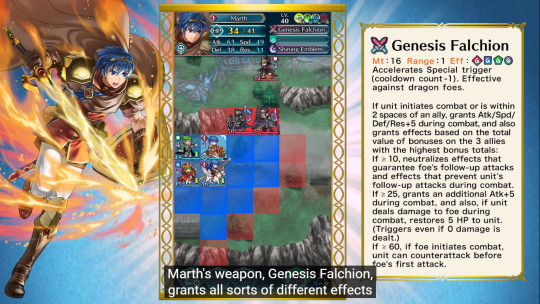



(As for what are the other skills other than the weapons, feel free to check the trailer linked above)
Now, I’ll order the characters from most to least anticipated by me, along with what I think of each:
Marianne: I’d say she’s the absolute winner for me but... much as I adore her, I actually feel rather mixed about this alt. She comes with [Atk/Spd Unity] which reverses field penalties on those stats and her kit+stats priming her for pure offense on player phase, she’s going to be really fast and able to take in a large portion of damage for the first strike from the enemy per combat. Not really shabby and actually really interesting colorless tome offensive unit, but I’d have liked to see a version of her wielding [Blutgang] after timeskip... I’m guessing we’ll see that in an alt like the Valentian Whitewings.
Sadly, I’ve been eagerly waiting for [Atk/Spd Unity] so that my Clarisse would have it, but the worst thing that could happen is that she already has the other two passive skillas Marianne has, so I think I’ll keep waiting.
As for artwork, I like it but at the same time, I feel slightly uncomfortable by the styling itself, Marianne’s expression in her special art is particularly bothersome but not to the extent I’d be upset about... it just feels odd, like maybe another artist such as Asatani Tomoyo might have proposed a take that’s more my liking.
Eirika: she’s kind of a special case here, in this ocassion, she takes up on Ephraim’s weapon and garment, I actually like this idea, since it references her strong connection with her beloved brother.
The art is pretty and I find it refreshing her hair is tied into a ponytail this time; but now, in terms of gameplay, she plays similarly to Marianne, yet there are many glaring differences for sure, like lowered damage reduction and easy stats plus follow-up negation effects nulled, making of her yet another excellent [Windsweep 3] source. *Presses F in the chat for Lifis*
She also carries a powercrept [Swift Sparrow 3] which I have no doubt will be inheritable, as it can heal the user by large amounts, complimenting skills with large cooldowns like [Aether] really well (do note that works when an offensive skill triggers in-battle).
Marth: the wait has been long worth for his fans, although I was never too drawn by him, I still like him from the Akaneia titles (yes, I just used an old translation all right). Although he’s just another infantry sword user, I actually appreciate he’s doning Anri’s armor, Marth’s ancestor from old times, the concept itself is actually so good and the artwork is impressive.
From a gameplay standpoint: his weapon is loaded with a ton of effects that require consistent stat boosting in field for the maximum effect, fortunately, you don’t have to worry as much about positioning allies near Marth, just keeping them buffed with at least a +5 on everything, Fae with her preference weapon (no need to refine) got you covered, but having a total of 25 is enough and easy to make of him a powerhouse. Again, he also comes pre-built, without any need for investment except of course adding an assist skill like for Eirika and Marianne, slightly gearing towards enemy phase but rather flexible to build.
Gatekeeper: I never hated (or will hate) him, he’s a well revered guard in the Garreg Mach Monastery with a cheerful and dutiful attitude that I like.. I’m just not really attached to him nor find the popular meme that interesting or funny.
Anyway, I have to admit that I.S. went very creative with his quotes, epithet and skill naming (and did you see that weapon’s animation? That’s crazy). His artwork is amazing too, you just have to look at all the detail on it like the castle on Gatekeeper’s background and his teammates accompanying him in his special attack.
As for gameplay, he’s pure enemy phase, a strong and durable mixed wall with tendence towards buffing his physical defense and carries an ability to block the enemy’s advancement and warping skills within an area centered on him, plus he also offers a little support as well, a rather interesting unit indeed, I don’t think he’ll be too annoying or even a common threat in PvP, but he might see use in some situations.
As for my free summon, I’m probably picking Eirika actually, I quite like her and that new A-skill plus [Atk/Spd Menace] on regular pool is looking spicy, perhaps my Nyx is going to love these, but I’ll wait for data mine to confirm inheritance restrictions on all new non-PRF skills.
Oh, I almost forgot but we’re getting a {Dragonflower} stat boost cap increase as follows:
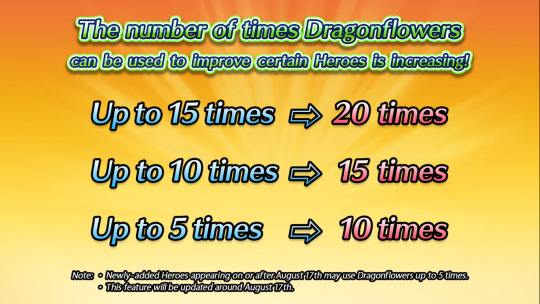
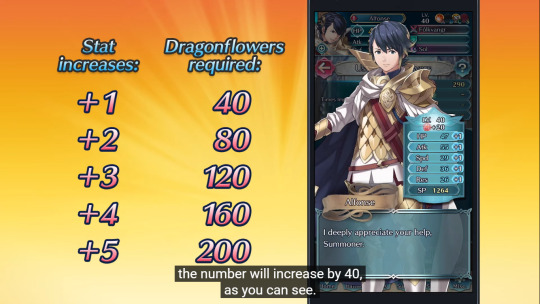
And these rewards tomorrow:

I like this because my Sonya will have 69 base attack for a month but again my maxed out projects will be incomplete aaaaaaaaa.
5 notes
·
View notes
Note
For all the jokes I see about feminists (and, frankly, anybody left-of-center) not having a sense of humor, I don't see much in the way of conservative humor. There's Anne Coulter, "Roseanne", Milo Yiannopoulos (I think), and...well, I'm not sure. A lot of it seems to not translate well, but when pressed, I've only been told I'm too stupid to understand it.
First off: you’re not stupid. They’re mean. If someone tells you you’re too stupid to understand something, they are a jerk and you have the right to ignore them.
Now that that’s out of the way….
Conservative humour is all about punching down and conformity. Like a lot of things that are part of conservative culture, it is very focused on keeping ingroup cohesion over most other values. Like, say, ‘kindness’ or ‘curiosity’.
So conservative ‘humour’ - what little I’ve seen of it; mostly National Review columnists who were trying to be Funny About The Disk Horse, minion memes, and crap from the alt-right really- is mostly about saying “we are not like these other people, you know, the shitty ones.”
People come together more easily when they have some shared dislike. A good example of this (...that’s not likely to be controversial on the hellsite) is Straight People Performatively Bitching About Their Spouses. The straight people who keep going “ach, [my spouse’s gender] must be a whole nother species, can you believe they [do gendered stereotypes] and [do things I don’t like]??” mostly don’t hate their spouse, but it’s a way to maintain ingroup cohesion with their other straight same-gendered friends. I’m a [gender], you’re a [gender]. Our spouses are not a [gender], therefore they’re weird and alien and not like us.
It keeps everyone in the ingroup close (because they dislike the same thing) and keeps people from the outgroup out (because they like or are the thing you dislike). I’m Like You, You’re Like Me. Those Other People, the ones who Do The Thing, they’re Not Like Us, so we’ll make fun of them. It’s a form of bonding, like monkeys picking flies off each other.
Conservative humour is making fun of liberal arts students who didn’t get a ‘real’ job, or Those People who sag their pants and talk funny, or people who are scared of guns, because they’re part of the outgroup, they’re Not Like Us. It’s making fun of “liberal hypocrisy” or a self-proclaimed feminist having a meltdown in public because liberals have to be crazy to believe the things they believe; they’re Not Like Us. It’s making fun of gay people and GNC people for doing gender “wrong”, because They’re Not Like Us. It’s making fun of literal fucking children for doing something ‘liberal’ their teacher or their parents roped them into, because They’re Not Like Us.
It’s being deliberately mean for the sake of mean- or in the case of the meme-y part of the alt-right, being deliberately gross for the sake of gross- to bring the group together and keep other people out.
Feminists and liberals “don’t have a sense of humour” because they’re not willing to indulge in the conservative kind of “funny” mean for the sake of mean. (Don’t get me wrong, there’s plenty of that on the lefty side of the fence- ‘male tears’, anyone?- but in general feminists are not fond of sexist/racist/homophobic humour, even if they’re normally part of what would otherwise be the conservative ingroup.) They’re willing to call that shit out, and usually the first thing they say is ‘that’s not funny’.
“Liberals have no sense of humour” is code for “liberals are part of the outgroup.” “They’re not willing to believe that making fun of people like them is funny, therefore they’re Not Like Us. And that means we’ll make fun of them even more for it.”
20 notes
·
View notes
Text
GENERIC JAPANESE PUN AND/OR OBVIOUS CULTURAL REFERENCE: My Experiences At Hyper Japan
The people at Hyper Japan, which ran from Friday until today, ranged from a duo dressed as the twins from Ouran Highschool Host Club, Godzilla himself (whose terrible hand I had the pleasure of shaking), and dozens of people wearing meme t-shirts. So far, so MCM. What set Hyper Japan apart from a more usual celebration of mangakas and mecha were the somewhat terrifying woman in johdpurs from the Tea Authority, a room dedicated to over a hundred different types of sake, beer and spirits, and the significant attention paid to Japanese craftsmanship.
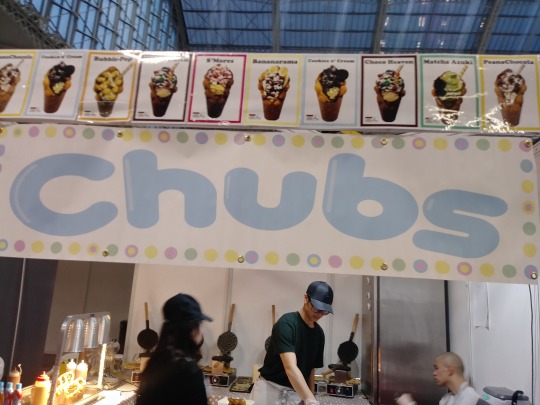
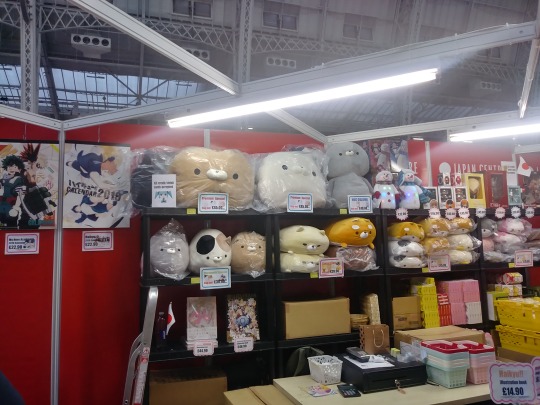
But of course, since this is after all a food blog, let's talk about the food. At the very beginning, I was collected from the front desk by two charming women from Fourteen Ten. We headed immediately to The Ramen Experience, where I was given a choice between shoryu, paitan and tonkotsu style ramen, and a chance to sample all three before deciding on which one I was to have in my bowl. Each comes from a different region, and each is distinct in flavour and mouthfeel. Shoryu, or soy sauce, was rich and roasty, effortlessly smooth and slightly sweet. Paitan, which, on the website was described as a chicken-based soup, was in person labelled as seafood stock. Either way, it was remarkably unfishy, and had a prominent, pleasant taste of both fresh and roast garlic. Tonkotsu is the neighbourhood darling style, a milky-cloudy broth made by cooking bones and feet for dozens of hours. A good tonkotsu should be gutsy, slightly thick, impossibly creamy and pure tasting. While the one I tasted was perfectly adequate, it did not live up to my expectations about what tonkotsu ought to be. As a result, I had a delicious bowl of shoryu ramen, with both gari, aka pickled ginger, and something that tasted like yacai, Szechuan pickled mustard greens (sour, slightly funky, a little bitter and lightly spicy) and along with the obligatory slice of chasu. Despite that the noodles lacked much of a bounce or snap, and the chasu wasn't fatty enough for my taste, it was a bowl worth finishing. That sounds like a lot of criticism mixed in with some faint praise, but no, outside of a couple stylistic choices, it was a bowl I'd be more than happy with at a restaurant, and would have been proud to make at home (I've tried making ramen. I've followed Binging with Babish's method, J Kenji Lopez Alt's version, and the edition found in Japanese Cooking: A Simple Art, whose title is possibly the biggest lie ever told. All of them were difficult, all of them were an obscene amount of work, all of them were frankly not worth the effort. If I find a method that works and doesn't make you want to die, I'll be sure to let you know.)

After that, the Fourteen Ten people let me loose on the stalls. I wandered past a woman selling EGL (Elegant Gothic Lolita) fashion, several weapons salesmen and a very busy stall selling manga both in the original and translated. Nearby, there were tables groaning with dolls and plushies, and there, over the way, were dakikamura, or body pillows, featuring characters from the Boku No Hero Academia anime. On the main floor, there was a condensed area where Japanese designers, artists, and craftspeople sold beautiful things, such as calligraphy, immaculate flowers made of silk, and shamiasen, traditional stringed instruments. I asked the person running the shamiasen stall if I could touch, and she leaned forward, rested a single finger on its body, and gave me a thumbs up. In short: no. I managed to get (very brief!) interviews with four different stallholders. I felt that since I was there, I might as well go do some journalism. I got brief peeks into the minds of two artisans, and one of the husband-and-wife teams selling swords, axes, and blades of all kinds:
The weapons sellers, Lee and Catherine, used to be in the business of selling replica toy handguns, until the law changed (presumably following the Dunblane massacre but neither mentioned it and nor did I). When that happened, it made replica guns a lot harder to sell. So instead, they moved on to selling swords, and especially movie replicas. It only made business sense for them to go to Comicon. Catherine's favourite is a massive bastard from World of Warcraft, while Lee favour's LOTR's Andruil. They don't think that any of their wares ought to be used for anything other than ornamental purposes, though you could technically use them for bushcraft.

The next pair I spoke to were Tomoko Kuroda, and her friend Yuko. Since their design heavily featured a pair of cats, one black, one white, named Alain and Jean, I asked whether they belonged to them, and about their personalities. While Alain and Jean aren't their real names, they are indeed their cats, and the characters of the globetrotting gatos – ones that are “curious and fickle, but very fussy with their travel items”. have existed for two years. Kuroda collaboarated with the famous artist/illustrator called Masako Hirano. A fact about each cat is that Alain is very interested about everything and very positive, while Jean is sensitive and naive, and likes to study hard. However, according to the info card I received, “Our effort to analyse their psyche might be pointless but this is our pleasure and mission nevertheless. This interpretation of the world seen by cats' eyes is our unique brand story.” Here, here!

You can find their e-boutique here.
While many people have heard of origami, comparatively few know about kirigami. I had the privilege of speaking to Susumu Yamayoka, who won the Grand Prize for the Charming Japanese Souvenir Contest back in 2011 for his City Postcard kirigami series. Kirigami is the art of paper-cutout. Yamayoka's series celebrated traditional Japanese scenes in aching, intricate detail – unsurprising, since Yamayoka told me that he's been doing papercraft for the last two decades. It took Yamayoka two months to design four postcards.His website is here

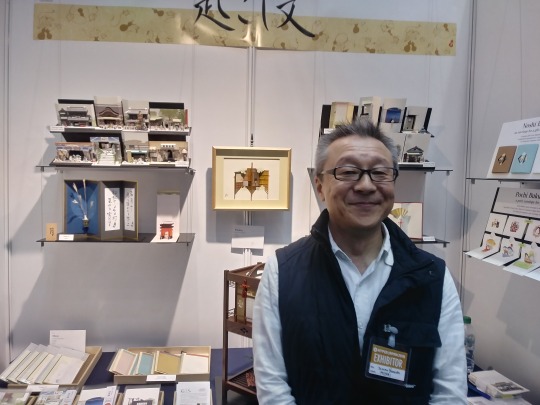
While there were many other stallholders, demonstrating mastery in mulberry-paper bookbinding, and watercolours, I did not have time to interview them all.
Then, I made a nice trip into the grimy speakeasy at Hyper Japan known as The Sake Experience. You rocked up, received about sixteen drinks tickets and two snacks tickets, and waddled around from table groaning with artisanal handmade drinks to table groaning with artisanal handmade drinks. Now, for those who've not had a sake experience, let alone The one; sake is a fermented rice beverage with a taste that uninitiated westerners may find quite unfamiliar. A good way to describe it is “like a grassier, fruitier dry sherry”, but since there are as many styles and traditions in sake brewing as there are in, say, French winemaking, the description I gave is insufficient. Another point about sake is that it can be drunk hot or cold. I remember saying when I was fourteen, having tasted my first hot sake, I said it tasted like “warm, unminty mouthwash”. It probably wasn't good stuff, but, as with many things, it's an acquired taste. I imagine that a mug of warm sake on a howling and bitterly cold Nagoya night would be comforting. As for the process of making sake, it involves inoculating cooked rice with Aspergillus oryzae, known in Japanese as koji, a fungus that transforms starches and sugars found in rice into alcohols. It's absolutely nothing to be afraid of, it's the rice edition of our homegrown hero, Saccharomyces cerevisiae, without whose noble efforts we'd never slug down a sixpack of PBR again – not that PBR has much of a future in our world. Cooked rice, koji, water, yeast and lactic acid are combined – at least in sake-houses that forsook the old way of doing things, where the rice and koji mixture is pounded to a paste – and the resultant mixture fermented. This is then pressed to remove unfermented solids, filtered once more, and then left to mature, like one would with wine.
For absolute beginners, I would suggest investing in a bottle of Shochikubai Shirakabegura Mio Sparkling Sake, not just because it doesn't have that much of a challenging koji flavour, but because it's significantly nicer than cat piss cava or bland prosecco. It has a gentle fragrance, is just the right side of sweet, and the carbonation adds both a sour note and makes it feel more refreshing. It isn't brut like champagne, more, a gentle, friendly face to pick up for a pleasant night in. I had the luck of picking up a bottle for £4 at the event – they were practically giving it away.

For those still a bit too afraid, there are a wide variety of Japanese fruit liqueurs. These often aren't like schnapps or are lighter fluid with a few drops of synthetic peach essence. Many Japanese fruit liqueurs, such as umeshu, have an ABV of about 12%. Umeshu is made by soaking whole green plums in grain alcohol, which is consequently watered down and sweetened. A different liqueur that I had the pleasure of drinking at Hyper Japan was Yomeishu Pink Grapefruit and Ginger (top); “precisely what it says on the tin!”, according to my tasting notes; a lusciously smooth and mild bev, tasting of real – if candy-sweet – fruit, like a boozier, top-quality alcopop. It was only later that I discovered that Yomeishu's flagship is a TCM (I use the “C” here generically) herb liqueur containing, of all things, the processed skin and organs of the mamushi pit viper, Gloydius blomhoffii. Unfortunately, I did not taste the snake tonic since it wasn't on offer, but had it been, I would probably have declined because I don't want to drink snakies. Nevertheless, snake-flaying aside, the good brewers at Yomeishu can make a lovely drink. The one umeshu I sampled , Urakasumi (buttom), was “bracing[ly] plummy” with an “almond bitter aftertaste”. As I don't have considerable umeshu experience, it was perfectly nice.
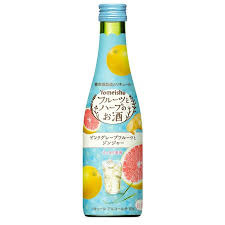
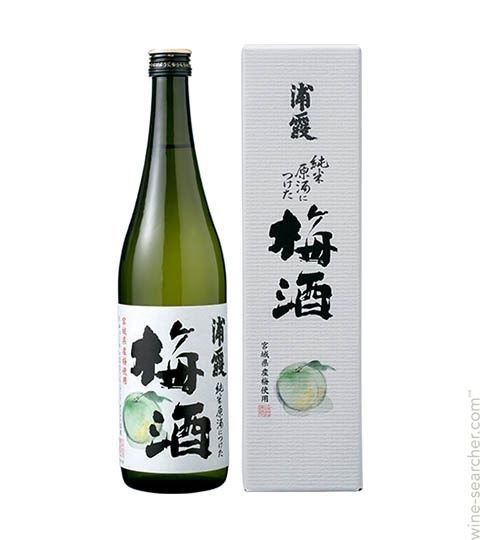
There were other types of sake on offer, such as the Yamabuki Gold, an aged sake, or koshu. The difference between a younger sake and a koshu is rather like a tequila blanco and añejo: the aged edition acquires a bronzeish colour and a deeper, often honeyish taste. I described the 7-time-in-a-row International Wine Challenge gold winner as having a “burnt toffee” character, “hypersmooth”, and with a “savoury aftertaste.”
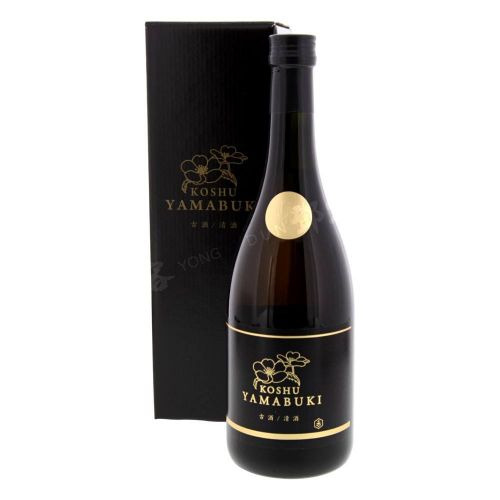
On the complete opposite end of the spectrum was the Junmai Ginjo Sachihime Dear My Princess, charmingly subtitled in block capitals with ALL THE BEST WISHES FOR YOUR FUTURE LIFE. I described the unpasteurized sake from what is apparently the smallest brewery in the Saga prefecture (found on Kyushu, the southern island making up Japan proper) as “sweet, creamy, esteric and smooth.” Following some basic research into sake tasting terminology, this “esteric”- or “fruity” quality is also known as ginjo, which is the resulting fragrance from the slow and low fermentation of rice whose exterior is mostly removed. Two compounds that contribute to ginjo fragrance are isoamyl acetate, well known to any brewers in the audience to being one part of the duo in many Hefeweizens, the other being clove. Due to my experiencing isoamy acetate almost always in conjunction with the phenolic compounds that made up clove, I iniitally had written down “phenolic” instead of “esteric”, and then had second thoughts as I noticed more classical fruit elements evolve, such as ethyl caproate – another ginjo component – which is common in many fruits, including apple and pineapple.

There were, oddly enough, what appeared to be luxury bottled tea., from the imaginatively named The Tea Company. It's here where I ran into the absurdly fashionable and intimidating woman from the Tea Authority. She recommended the Thé D'Or Gyokuro, which turned out to have “excellent clean bitterness”. It was a “very green” green tea, with a pleasing “sprightly slight salinity”. I preferred, however, the Ibushi, from the same label: it “tickles the throat”, had “topnotes of fruit, then smoke and malt”, and was “silken, bitter, refreshing and savoury”. The tea used to make the Ibushi was apparently smoked over Japanese cypress. Do I approve of bottled tea costing between £11 and £30 per bottle? I honestly have to say, even if it was absolutely delicious tea, that I can't.


Finally, there were two spirits I tried. One was the Satsuma Shiranami, which is a spirit made from sweet potato- and it sure tasted of it: “earthy, nutty, popped rice, sweet but not sugary, and filling” is how I described it. This would in my mind be a fantastic addition to a hot toddy or pre-Christmas lunch drinks. The second is something I don't anticipate many of you ambling out of your wells to get, but I'll rec it anyway: the Kyoya Shuzo Yuzugin, combines two things that unsettle many people: gin, our proudest spirit, and Japanese botanicals, which can not be to everybody's tastes. Unsurprisingly, it had a deep, floral, long-lasting yuzu fragrance, and remarkably, I noticed a light tongue-buzz feeling, due to the sansho peppercorn. I won't fully get into this now, but the short is that the fruit of the Zanthoxylum trees produce compounds called sanshools, which give an anaesthetic, electrocuting, tingling, numbing sensation, most prevalent in Szechuan cooking, and one that I adore. Sansho peppercorn is Z. piperitum while good ol' Szechuan peppercorn is Z. simulans or bungeanum. While overall I can see more applications for the Satsuma Shiranami, not just in drinks, but as a nice thing to spin around a highball glass while relaxing, as one does when one is 23, if you like both yuzu and gin, and manage to find a bottle, go get it. Also, the bottle's pretty.
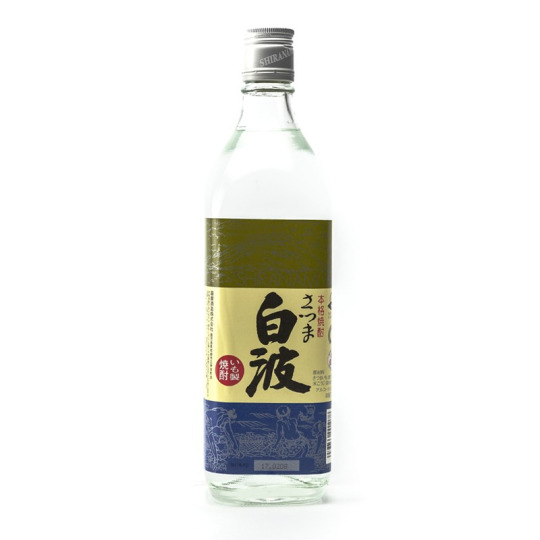
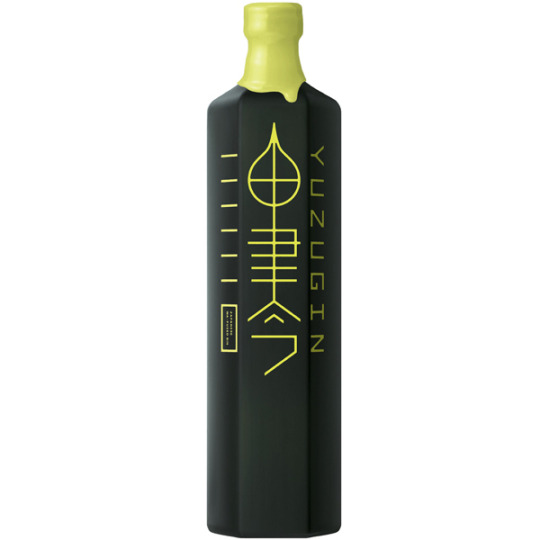
In the drunken stupour that tends to accompany having too many small drinks, I stepped outside and saw a stand selling three of my favourite Japanese snacks: takoyaki, sweet potato korroke and karaage. I got three for three, and sat down heavily in a chair, and watched the crowd pass me by as I had my snacks. Takoyaki is an orbular delicate wheat pancake, filled with chopped octopus. Mine were decorated traditionally, with aonori, aka green laver, mayonnaise and a sweet-savoury glaze made from Worcestershire sauce and reduced sake, soy sauce, mirin, kombu, and katsuoboshi (shaved dried bonito tuna). I like them because they have a wonderfully crunchy outside, and the inside is still kinda like a just-underset egg yolk or slightly underdone pancake batter, or a bechamel sauce. I think it's obscenely delicious, and was thankful at the paucity of octopus bits in the ones they gave me.

Karaage is a deep frying technique different from the better known tempura. In karaage, marinated pieces of meat, most usually chicken, are tossed in potato starch and deep fried until crispy. These had a crusty, gloriously msg-laden shell with tender pieces within. The crust had big crumbs in it, lending a nice variation in texture.
Korokke is a Japonification of “croquette”, where usually mashed potato is stuffed with a filling, rolled in panko, and deep fried. These ones were pure sweet potato, and utterly fantastic. I have a long-held suspicion that the Japanese sweet potato cultivars tower head and shoulders above those grown anywhere else. They tend to have the most amazing chestnutty taste and yielding texture. These were no exception. The korokke were “fudgy” and satisfying, the panko crust so ethereal, it might not have even been there. Of the three fried snacks, they were without a doubt my favourite.
In short, I did not eat or drink one thing on Friday that wasn't delicious, and there were a few that were completely exceptional.
As I walked back from Kensington Olympia to take the bus home, I thought about how I'd been exposed to so many different aspects of the culture of another somewhat strange, tea-obsessed island, and how valuable it was that events like Hyper Japan are put on; raising awareness in not just the more massively marketable aspects of another culture, but their unique traditions also. I had a great time. Since it's now over, I honestly can't wait for the summer one!
3 notes
·
View notes
Text
Voting with a click of a button
Some of my favourite pages on Facebook are the political and ideological meme pages. Some of my favourite include Communist Memes

and ALP Spicy Meme Stash

SOOOOO yes, you can probably pick up on what my political views are based on my Facebook likes and yes, maybe this data is being bought and analysed and being turned into information for political parties to see what I’m interested in to propagate their agenda onto me. The thing is though, I don’t care. I don’t think this is necessarily a bad thing and for people that do think so, I assume they’ve found a way to hide themselves or they’re probably just ranting about it to their friends at their Wednesday coffee. I probably would care if they actually did something about it. They don’t do anything. By them I mean politicians, well their campaign managers. If they did something of significance to sway my vote it didn’t work.

I’m going to be discussing this matter with an emphasis on young people mainly because I am quite young and I don’t really know how old people think because whenever I hear an old person talk politics I want to bash my head through a door.
The Liberal party bought a snapchat filter last election and although they got majority of the seats I don’t think that it was from the social media tactics they used. Don’t get me wrong I believe that politicians need a social media presence and that they need to do it right but as a young voter I don’t want to put the national party logo on my face, I want to actually understand what proposed policies are. Luckily in Australia we have compulsory voting but I still remember one of my close friends saying when she got the letter to register to vote she threw it in the bin straight away because and I quote ‘f*ck politics we’re all f*cked anyway’. Yeah I’m not friends with her anymore (don’t worry it’s not because of her political views, no matter how nihilistic they are). What I want from politicians when campaigning is to engage with their supporters online by actually explaining what they plan to do if they get Parliament in laymans terms or in terms that young people can understand without using all the technical jargon that’s put into the bills. The don’t even talk that formally in the lower house so I don’t understand why they can’t relax a bit when it comes to young people. I listen to Radio National most mornings because its what my dad plays on the radio but I know that I’m probably the only one within a 25 km radius that does so, therefore I know for a fact that people my age don’t know what’s going on so they tend to donkey vote. Then, once they get screwed over by the government is when they decide to show an interest. *Insert mad posts about cut penalty rates* *Will this link to an article suffice?*

Even though I like to think I’m so politically apt, I still don’t understand 50% of what goes on in Parliament. To me, Bill Shorten seemed like a pretty fly guy but at the time of the election all I heard was that the Labor Party is the lesser of two evils to which I had to stand back and do my own research because what I’ve learnt from social media is that you can’t trust anyone because most of the time what I’m seeing on TV or on my newsfeed is just propaganda to sway my vote (by the way I’m not contradicting myself from what I said earlier about my feed being swayed one way or the other through data analytics. What I saw during election time was from the politicians themselves). Since most young people can’t fathom it through actual politicians, they translate it into memes which whilst their main purpose is to entertain, they tend to educate and start a discussion in the comments way way WAY more than if it were on an article or a press post like older people do. Plus they’re way more elaborate and insightful rather than a middle aged person’s conservative opinions that do not make much sense to anyone other than themselves and their small alt-right town in whoop whoop. Am I being to harsh? Yes I’m sorry. I just have bad, bad memories of trying to be rational with people that have lived 35+ years longer than I have. You’d think they’d be more perceptive hey? (and yes that is a dig at the people running our country right now)

Yes, Billy did have some cute photos of his family on his Facebook and posted a “SAVE MEDICARE” post every day but that was about it. No engagement, no actual agenda and not even one meme. All I saw was their defence mechanism against the Liberal Party which was argued that it was just a made up ploy by Labor to get more votes anyway. GOSH. Even today, good old Malcolm doesn’t utilize his social media platforms to where they could be. Someone who I do think does a great job is Victorian Premier Daniel Andrews. No matter what adults (I know I’m an adult but I don’t count because I am a teenager and still live with my parents I don’t count) say about his leadership, he knows how to use social media and I respect that. He engages with his following, he posts regularly about the latest happenings within Victoria and isn’t afraid to joke around or to address serious issues that the Victorian government is neglecting to do. Granted he has a smaller population to deal with than Turnbull and his government legalised medicinal cannabis and finally started work on expanding major freeways so that’s probably the major reasons for his popularity.
For the record I honestly don’t care for the legalisation of recreational cannabis but as long as its helping sick people I’m glad for it

Lastly I just want to touch on a certain ex-politician that seems to have given up on his political agenda (for now) and basically becoming a meme lord.
SHOUT OUT TO RICH PEOPLE WHO THINK THEY CAN BECOME POLITICIANS
(yes trump too)(had to mention him somewhere didn’t I?)(Rupert did something right)
Clive Palmer seems to be more respected now than he ever was before when he was in the senate. This just proves that appealing to young people is a good thing. Yes, you may lose your credibility and yes there may not be a way to get back in (well with his new found supporters there might be) but people may actually listen to you and what your agenda is which will in turn DARE I SAY IT sway the voters.

See this for more clive
references:
Anon 2017, "Workers have their say on penalty rates decision", ABC News, <http://www.abc.net.au/news/2017-02-23/workers-have-their-say-on-penalty-rate-announcement/8296480>.
Anon 2017, "Penalty rates to be reduced for hospitality, retail workers", ABC News, <http://www.abc.net.au/news/2017-02-23/weekend-penalty-rates-fair-work-commission-decision/8295758>.
Merrill, J 2017, "Liberal, Moderate or Conservative? See How Facebook Labels You", Nytimes.com,<https://www.nytimes.com/2016/08/24/us/politics/facebook-ads-politics.html>.
Anon 2017, "Social Media in Politics - Twitter and Facebook as Campaigns Tools", ThoughtCo, <https://www.thoughtco.com/how-social-media-has-changed-politics-3367534>.
2 notes
·
View notes
Text
Why the Charlottesville Marchers Were Obsessed With Jews by Emma Green
SOURCE: https://www.theatlantic.com/politics/archive/2017/08/nazis-racism-charlottesville/536928/
The “Unite the Right” rally in Charlottesville was ostensibly about protecting a statue of Robert E. Lee. It was about asserting the legitimacy of “white culture” and white supremacy, and defending the legacy of the Confederacy.
So why did the demonstrators chant anti-Semitic lines like “Jews will not replace us”?
The demonstration was suffused with anti-black racism, but also with anti-Semitism. Marchers displayed swastikas on banners and shouted slogans like “blood and soil,” a phrase drawn from Nazi ideology. “This city is run by Jewish communists and criminal niggers,” one demonstrator told Vice News’ Elspeth Reeve during their march. As Jews prayed at a local synagogue, Congregation Beth Israel, men dressed in fatigues carrying semi-automatic rifles stood across the street, according to the temple’s president. Nazi websites posted a call to burn their building. As a precautionary measure, congregants had removed their Torah scrolls and exited through the back of the building when they were done praying.
“This is an agenda about celebrating the enslavement of Africans and their descendants, and celebrating those that then fought to preserve that terrible machine of white supremacy and human enslavement,” said Jonathan Greenblatt, the head of the Anti-Defamation League, or ADL. “And yet, somehow, they’re all wearing shirts that talk about Adolf Hitler.”
For these demonstrators, though, the connection between African Americans and Jews is clear. In the minds of white supremacists like David Duke, there is a straight line from anti-blackness to anti-Judaism. That logic is powerful and important. The durability of anti-Semitic tropes, and the ease with which they slide into all displays of bigotry, is a chilling reminder that the hatreds of our time rhyme with history and are easily channeled through timeless anti-Semitic canards.
The University of Chicago historian David Nirenberg has spent his career studying anti-Jewish movements and beliefs. Recently, he spoke to a group of students about anti-Semitism on college campuses. “At the end of the … talk, I said, ‘I wouldn’t rush from all this material to thinking that this anti-Semitism is as dangerous as its early 20th-century predecessor,’” he told me. “Seeing the images of the Virginia protest, I must admit, I kind of felt otherwise. … It certainly made me feel that books and ideas that I had treated as very marginal in our society are not as marginal as I might have hoped.”
Anti-Semitism often functions as a readily available language for all manner of bigotry—a Rosetta Stone that can translate animus toward one group into a universal hate for many groups. “Ever since St. Paul, Christianity and all the religions born from it—Islam, the secular philosophies of Europe, etc.—learned to think about their world in terms of overcoming the dangers of Judaism,” said Nirenberg. “We have these really basic building blocks … for thinking about the world and what’s wrong with it … by thinking about Judaism.”
In the world sketched by white supremacists, Jews hover malevolently in the background, pulling strings, controlling events, acting as an all-powerful force backing and enabling the other targets of their hate. That’s clear in statements made by people like Duke, the former Ku Klux Klan leader who proudly marched with other white supremacists in Charlottesville. Jewish Zionists, he complainedto a gathered crowd, control the media and American political system.
“The extreme right considers many people their threat. But it always, always, always comes back to the Jews.”
Anti-black and anti-Jewish sentiment have long been intertwined in America. When the Jewish factory worker Leo Frank was wrongfully convicted of murder and lynched in 1915, two new groups simultaneously emerged: the ADL, which fights against bigotry and anti-Semitism, and the second Ku Klux Klan, which began by celebrating Frank’s death. Later in the 20th century, Nazis became a natural model for white-supremacist movements in the United States, said Marjorie Feld, a professor of history at Babson College. The logic of white supremacy was similar: Hatreds became universalized through common archetypes. Jews were seen by white supremacists as capitalists undermining local businesses. Black Americans fleeing the South in the Great Migration were seen as taking away crucial labor. Catholics were seen as immigrants stealing American jobs.
After the Holocaust, neo-Nazi movements were largely consigned to the country’s political fringe, although they never fully left the American landscape. In 1978, for example, a Nazi group pushed to demonstrate in Skokie, Illinois, deliberately selecting an area densely populated by Holocaust survivors. The proposed march caused a national uproar, and the American Civil Liberties Union famously defended the group’s First Amendment rights in court. Eventually, they ended up demonstrating in Chicago.
The Charlottesville demonstration differed from the planned Skokie march in two important respects, Nirenberg said. First of all, there’s a political context for the “Unite the Right” demonstration. It fits into debates over free speech and college campuses as the front lines of cultural battle, he said. The Skokie march was also widely and vigorously condemned by political leaders. “That strong, clear commitment to certain values of inclusion from our political leaders is not present in the same way,” Nirenberg said.
On Monday, President Donald Trump held a press conference about the violence in Charlottesville. “Racism is evil,” he said. “Those who cause violence in its name are criminals and thugs, including the KKK, neo-Nazis, white supremacists, and other hate groups that are repugnant to everything we hold dear as Americans.” This statement came two days after his initial comments on the protests, in which he condemned the “hatred, bigotry, and violence on many sides.” The suggested equivalence between the white-supremacist demonstrators and their counter-protesters shocked politicians and public figures in both parties, who quickly criticized Trump’s unwillingness to condemn neo-Nazis and the KKK. “It’s very clear that the people marching in Charlottesville felt very supported by the shape of the public statements made by President Trump,” said Nirenberg. On Tuesday, the president held another press conference in which he reiterated his previous claims, saying, “What about the alt-left that came charging … with clubs in their hands? Do they have any problem? I think they do.”
Greenblatt argued that the backlash against Trump’s comments is not about politics—it’s about recognizing a pattern of anti-Semitism. There was the Holocaust Remembrance Day statement that didn’t mention Jews; the conspiratorial meme of Hillary Clinton and a Star of David that Trump retweeted during the campaign; the infamous Nazi salute and shouts of “Hail Trump!” at an alt-right conference following the election. In the past several days, a number of groups have renewed their calls for Trump to fire Steve Bannon, his chief strategist, in part based on Bannon’s role in heading Breitbart, which he called a “platform for the alt-right.”
To people like Greenblatt, these are all signs that, at best, the White House does not take anti-Semitism seriously enough. At worst, the Trump administration indulges bigotry so as not to alienate some supporters. “Heck, there’s Jewish grandchildren running around the White House,” Greenblatt said. “But make no mistake, the extreme right considers many people their threat, but it always, always, always comes back to the Jews.”
“You just can’t say this as a historian, but I feel like we’re at this critical juncture.”
As Nirenberg pointed out, the violence in Charlottesville was part of a broader political context. The fringe right is reacting to other political movements with nostalgia, Feld said—a yearning for people, including minorities like Jews and blacks, to “know their place.”
“It makes sense to me that just as … we’re seeing people of all backgrounds be brave enough to insist that these monuments about slavery” be toppled, Feld said, “these people would come out and say we would want to return to the way things were.”
The identity politics of the intersectional left are radically different from the generalized bigotry of the far-right fever swamps. And yet, they are in relationship: Universalized movements that aim to fight oppression against all peoples in all of their identities necessarily invite backlash from those who feel that they’re losing their place in society. “It would really reduce and impoverish debate to see this example as primarily an anti-Jewish rally … [or] as entirely an anti-African American rally. It’s all those things,” said Nirenberg. “To the extent that we separate those and claim, ‘No, it’s only about my identity,’ we fail to understand basic aspects of identity politics in the present.’”
Of course there are neo-Nazis in our time. There are those who hate Jews in every time. It’s a hatred that easily flickers between the universal and the particular, melding with the similarly particular hatreds of blacks and immigrants and other minority groups. “You just can’t say this as a historian, but I feel like we’re at this critical juncture,” Feld said. “I don’t feel like the world is unsafe for Jews. I really don’t. But I do feel like all social groups need to pay careful attention and speak out against what’s happening.”
Like Nirenberg, Feld was trained to look at the images coming out of Charlottesville and see not a freak occurrence, but the echoes of history.
“God,” she said. “It’s fucking scary.”
0 notes